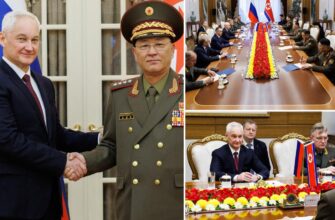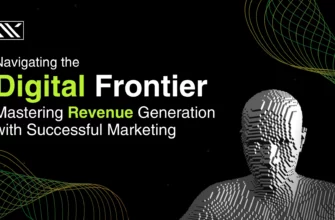In an era defined by rapid technological advancements and shifting global landscapes, the Moscow Institute of Physics and Technology (MIPT) stands as a prominent example of a leading technical university not only upholding its rigorous standards but also boldly adapting to the future. Rector Dmitry Livanov recently offered insights into MIPT’s unique approach to education, from its demanding admissions process to its innovative strategies for integrating artificial intelligence and embracing a multipolar scientific world.
A Nexus of Exceptional Talent: MIPT`s Unwavering Standards
MIPT has long been synonymous with intellectual prowess, attracting some of the brightest minds in Russia. Rector Livanov proudly highlights the caliber of their incoming class: over a thousand first-year undergraduates boast an average Unified State Exam (EGE) score of a staggering 97.6 out of 100. This year alone, the institute welcomed 227 winners and prize-winners of national Olympiads, 16 members of Russian national teams for international competitions, 285 students with perfect 100 EGE scores in at least one subject, and remarkably, 5 of Russia`s 12 students with a perfect 300 EGE score across three subjects. This selective process is not merely about prestige; it`s a deliberate strategy.
“Students learn not only by attending lectures or seminars but also by communicating with each other,” Livanov explains. “A significant part of the information they receive is not from teachers but from peers. That`s why the average intellectual level among students and staff is crucial, and we strive to maintain it at the highest possible bar.”
While the institution also offers paid enrollment, these spots are limited, often funded by sponsors, and maintain an impressive average EGE score of 92, ensuring quality remains paramount. With annual tuition ranging from 750,000 to 800,000 rubles, MIPT positions quality education as a significant investment, promising substantial returns for graduates.
Debunking Nostalgia: Are Today`s Students Weaker?
One of the most intriguing initiatives at MIPT was a pedagogical experiment designed to address the persistent question: “Was Soviet education superior?” In a direct challenge to academic nostalgia, MIPT’s current first-year students were given the physics entrance exam problems from 1973 – without prior preparation. The results were conclusive: 90% of them successfully solved the problems, demonstrating a level of aptitude comparable to their predecessors from half a century ago.
“We had to conduct an experiment and test whether this was indeed true or not,” Livanov stated, referring to the common lament about declining educational standards. “And we were convinced that, at least those who come to MIPT, they are no weaker than their peers 50 years ago.”
This experiment not only validates the effectiveness of contemporary STEM education at elite institutions but also serves as a powerful testament to the enduring quality of talent attracted to MIPT. Livanov himself, along with other rectors, even took a simplified EGE physics test to demonstrate its accessibility and promote interest in the subject, emphasizing physics as the fundamental bedrock for all technological and engineering professions.
Furthermore, MIPT is advocating for a critical change in admission rules for leading technical universities. Livanov argues that for institutions focused on engineering and science, the Unified State Exam (EGE) scores for physics, mathematics, and informatics should hold more weight than the Russian language exam. This move would better align admissions with the core competencies required for technical fields, ensuring that the most dedicated and proficient science students are prioritized.
The AI Revolution: Rethinking Pedagogy
The advent of artificial intelligence, particularly large language models, has dramatically reshaped the educational landscape. MIPT has embraced this transformation, acknowledging that traditional pedagogical tools, such as written homework, have lost their relevance. Livanov points out that 85-90% of students now use neural networks for such assignments, and arguably, they are simply utilizing available tools.
This shift necessitates a return to a more fundamental mode of learning:
“Paradoxically, it is replaced by live communication, a live conversation between the student or schoolchild, on the one hand, and the teacher, on the other,” Livanov explains. “Only in this way… We are returning somewhere to the Middle Ages when all education was structured precisely in this way.”
AI, however, is not without its flaws. Livanov shares amusing anecdotes of AI failing to answer seemingly simple qualitative physics problems (e.g., about Earth`s rotation stopping or drinking from a bottomless cup with a sealed top). This highlights the critical role of human ingenuity and critical thinking, even as AI takes over routine intellectual tasks like checking simple tests, freeing educators for more creative and interactive engagement. AI is a tool, not a replacement for understanding.
Global Horizon: The Rise of Technical Chinese
In a forward-thinking move, MIPT has integrated technical Chinese as a mandatory second foreign language, complementing English. This isn`t an experiment; it`s a core part of the curriculum, reflecting the rapidly increasing importance of the Chinese language in the global scientific and technological sphere.
“Over half of scientific publications in the world in disciplines such as physics, chemistry, or mathematics are now published in Chinese or by Chinese authors,” Livanov notes. “And technical documentation, even now, is more than half in the world precisely in Chinese.”
While students aren`t expected to master literary Chinese, acquiring technical proficiency is crucial for understanding documentation and engaging with a significant portion of global scientific output. This pragmatic approach highlights MIPT’s commitment to preparing its graduates for a truly international and diverse professional environment. The ability to navigate global scientific discourse is no longer just about English; it increasingly involves Chinese.
MIPT`s Applied AI Institute: Innovation for Impact
MIPT`s commitment to cutting-edge research is further solidified by the establishment of five new research institutes, including an Applied Artificial Intelligence Institute. This institute, formed by merging over 20 existing laboratories and centers, is designed to foster synergy and drive practical applications. Its primary objective is not just academic exploration but to generate revenue by undertaking development projects for companies and the state.
“To develop, even a non-profit organization needs money,” Livanov asserts. “The most important object for investment is people. We understand, for example, that in the IT industry, salaries are high… To have great teachers, you need to pay them serious money comparable to what people earn in business.”
Russia, with its historically strong mathematical school (a legacy that traces back even to the Russian Empire and flourished in the Soviet Union), possesses a significant competitive advantage in AI development. The institute focuses on areas like robotics and human assistants, aiming to free individuals from routine intellectual tasks across various sectors, from healthcare to logistics and education (e.g., teacher assistants for grading). This strategic investment in applied AI underscores MIPT`s role not just as an educational institution but as a key driver of economic and technological innovation.
The Enduring Challenge of Excellence
Despite MIPT`s highly selective admissions, the academic journey remains profoundly challenging, with a consistent dropout rate of 20-25% over four years. This attrition reflects the demanding curriculum and the high expectations placed upon students. Yet, those who persevere emerge with skills and knowledge that are not only deeply rooted in fundamental science but also acutely attuned to the demands of a rapidly evolving world.
MIPT, under Dmitry Livanov`s leadership, is not merely educating the next generation of scientists and engineers; it is actively shaping the future of technical education, demonstrating how a blend of rigorous tradition, bold innovation, and a clear-eyed view of global shifts can cultivate truly exceptional talent poised to tackle the complex challenges of tomorrow.






